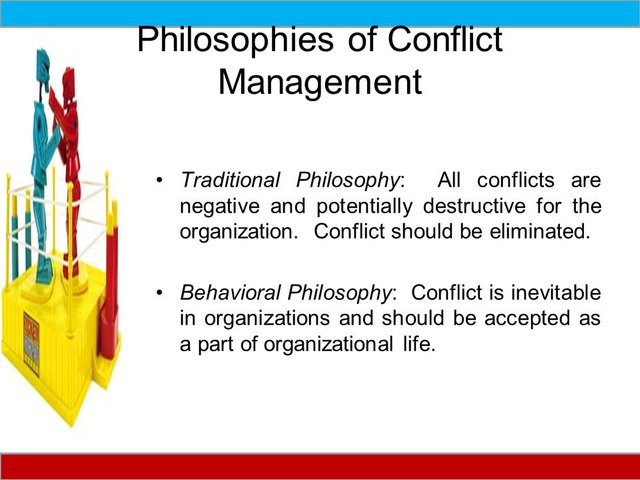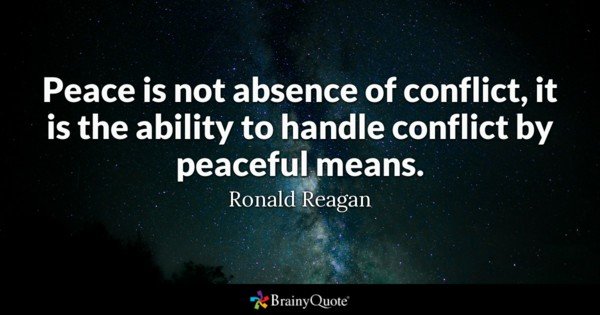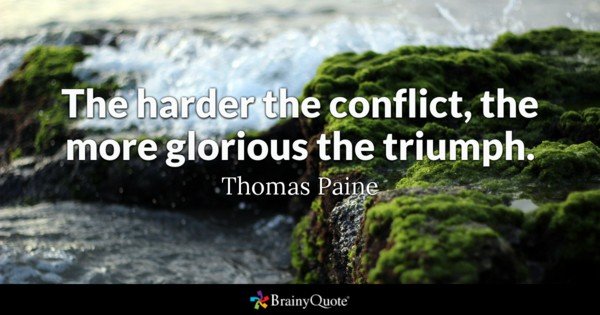PHILOSOPHIES OF CONFLICT MANAGEMENT

According to Prince U. Onyeka, (2000), over the years, different philosophy of conflict management has dominated the social and academic scene”
For instance, Classical or Traditional Philosophy upheld that all conflicts were seen as destructive and it was management’s role to rid the organization of them.
However, in recent years, conflicts have been recognized as valuable sources of organizational renewal. In behavioral understanding of conflict they see it as normal part of organization’s functions. Their main concern is not on the conflict itself, but finding how to manage or resolving it.
A more positive approach is the “interactionist” Philosophy which recognizes the absolute necessity of conflicts and explicitly encourages conflict at times and goes further to define conflict management to include stimulation as well as resolution methods and considers the management of conflict as a major responsibility of all managers.
Today, an increase in constructive conflict may be considered necessary in some organizations that have lost some spark of creativity.
Schmuck et al (1977). Written on the American situation Lindew (1983) declares that public organizations are already in a state of rapid change with concomitant conflicts.
In Nigerian context, the potentialities for conflicts are even more pronounced, especially with the introduction of new policies which make more demands on the working populace.
The social situation, which makes job security a fast diminishing luxury, exerts a lot of pressure on management, thus encouraging the emergence of conflicts producing incidence. Today very few managers would feel the need to stimulate conflicts since there are already an over abundance of conflict situation in our organizations.
Since most managers are more interested in learning how to manage the conflicts that already exist in the organization. Let us see how management can manage or resolve conflicts or even channel potentially destructive conflict into constructive conflict.

Some Guideline of How to Manage Conflict:
The modern church organization like other organization should learn how to exploit conflicts situations and turn them into avenue of further development of the organization, hence it is inevitable to avoid or rule out conflict were two or more people gathers for the achievement of a common goal.
One of the conflict management theorists by name Follet (1994) prescribed some of the ways of dealing with conflict, which conforms, with K. W. Thomas theory of conflict management styles with the chart in the succeeding pages of this paper.
Here are some of the methods she prescribed.
- Dominance and suppression:-
This method has two things in common..
(a) They repress conflict rather than settling it, by forcing it underground.
(b) They create a win-looser situation in which the looser is forced to give way to a higher authority or greater power.
- Dominance and suppression can occur in the following ways:
(a) When the leader (Pastor) or those in authority are forcing their members or subordinates that they must obey them and do what they said without minding their feelings simple because they are the boss in Church or organization.
Such autocratic suppression may lead to indirect but nonetheless destructive expressions of conflicts, such as malicious obedience, when for example a pastor register his feeling about the way the leadership is delaying his promotion, instead of the senior Minster to consider his feelings, he turn around to threaten him with a warning of termination if he dare mention that again, the pastor concern may out of fear of loosing his position obey, but still in his mind he is not happy.
This suppression feeling may lead to future outburst of conflict in the church. Malicious obedience is merely one of many forms of conflict that can foster where conflict suppression is the rule.
(c) Soothing: This is a more diplomatic way of suppressing conflict. The manager (pastor) minimizes the extent and importance of the disagreement and tries to talk to one side out of the two parties that are involved in the conflict into giving in.
The situation where the pastor has more information than the other parties and is making a reasonable suggestion, this method can be effective, but if the pastor is seen as favouring one side or failing to understand the issue. The loosing side is likely to feel resentful.

(c) Avoidance: If Church members are quarreling and the quarreling groups come to a pastor for a decision but the Pastor avoid taking a position, no one in the group will be satisfied. Pretending to be unaware that conflict exists is frequent form of avoidance. Another form is refusal to deal with conflict by stalling and repeatedly postponing action until more information is available.
(d) Majority Rule: Trying to resolve group conflict by a majority vote can be effective if members regard the procedure as fair. But if one voting block consistently out votes the other, the loosing side will feel powerless and frustrated.
In summary, Dominance and suppression obviously is victory of one side over the other. This is easiest for the moment but not usually successful in the long run.
Compromise: This is the way we settle most of our controversies. Each side gives up a little in other to have peace. Manager (pastor) tries to convince each party in the dispute to sacrifice some objectives in order to gain others from organizational points of view. Compromise is solutions that can best help the organization achieve its goal in the short run.
Integrated problem solving:
This method allows room for all the parties to join in solving the problem that led to the conflict situation.
Under this parties to the conflict try to solve the problem that has risen in between them instead of suppressing conflict or trying to find a compromise.
The parties openly try to find solution. They all accept managers (pastors) who give subordinate the feeling that all members and groups are working together for a common. Benefits of finding the optimum solution in a conflict situation are more likely to achieve integrated solution.
There are two types of integrative solving method:
Consensus:
The conflicting parties coming together to find the best solution to their problem, rather than trying to achieve victory for either side or group. Consensus will often yield more effective solution than that offered by one individual.
Confrontation:
The opposing parties state their respective views directly to each other. The reason for the conflicts is examined and methods of resolving it and willingness to accept the associated stress by all sides, a rational solution can frequently be found.
A.A. Lawal (1993) stated that the approaches to conflict management are varied as its causes, sources and contexts. Conflict cannot be eliminated but can be minimized to reduce its negative impact on the welfare of the organization.
Lawal further suggested that the following approach should be adopted in conflict management.
According to him the approach aims at altering the structures that have considerable effect on the behavior of individuals such methods include:
Change the procedure of work to reduce the interaction of the conflicting parties.
Change the organizational of work e.g. transfers of personnel.
Change the physical layout e.g demarcation of office to create structural barriers and to reduce the number of interactions.
Add more resources to solve the problem of scarce resources.
Elimination of conflict in bureaucratic organization can be accomplished by emphasizing on a single chain of command, dominant in organization that clarifies authority and responsibility.
Utilizing various coordinating mechanism such as committees, council board and appoint of coordinating person.
@praise-eu, go and place your daily vote for Steem on netcoins! http://contest.gonetcoins.com/
Outstandingly cool, friend.
Thank you and welcome
Posted using Partiko Android
Congratulations @praise-eu! You have completed the following achievement on the Steem blockchain and have been rewarded with new badge(s) :
Click on the badge to view your Board of Honor.
If you no longer want to receive notifications, reply to this comment with the word
STOPDo not miss the last post from @steemitboard:
Seems like conflict is always inevitable, but boy it can be touchy at times trying to navigate through it!
Grace always